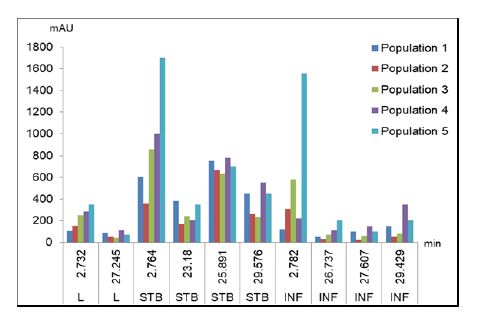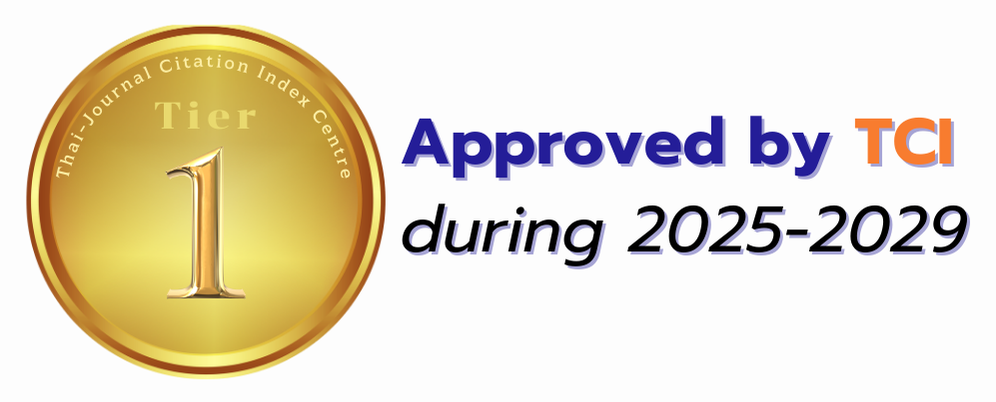Ecological phytochemistry of medicinal Trema orientalis (L.) Blume (Cannabaceae) in Phu Meang-Phu Thong forest group of Thailand
Keywords:
Biotechnology, Chemodiversity, Cannabaceae, Forest ecologyAbstract
Trema orientalis (L.) Blume in family Cannabaceae is wildly distributed in the tropical regions. In Thailand, these plants were found in various habitats, all plant parts were used as traditional medicine in the treatment of infection. The purpose of our work was to compare the chemical profiles among similar plant part extracts from five different ecological habitats includes hill evergreen forest, mixed deciduous forest, coniferous forest, edge and disturbed forest and agricultural areas at the Phu Meang-Phu Thong forest complex using TLC and HPLC chromatographic techniques. The lipophilic extracts of all plant parts were analyzed for chemical characters with TLC, mobile phase (hexane : ethyl acetate, 8:2 v/v) and UV illuminated detection (wavelength 254 and 365 nm). HPLC, mobile phase consisted in a solvent system, 60% v/v methanol in 40% v/v aqueous buffer, wavelength 230 nm. TLC analysis showed single band separation and Rf values measurement at the positive results of terpenoids, phenolic compounds, coumarins and sterols. For quantitative HPLC, each plant part extract (10 mg/mL) showed signals appearing of UV detection nearly or at the same position, as same as their UV absorbance values in each dominant compound. The retention time period of dominant peak was repeatability in all replication with retention time in average of leaf extracts at 2.73 and 27.24 min, stem bark extracts at 2.76, 23.18, 25.89 and 29.57 min and the inflorescence and infructescence extracts at 2.78, 26.73, 27.60 and 29.40 min respectively. Moreover, our results also showed the chemical pattern compounds that tend to accumulate highly in each plants part of disturbed and agricultural habitat which are useful to guide the bioactive compound isolation from T. orientalis. For habitat relationships, the chemical profiles in each plants part extracts from different ecological habitats were classified in 2 groups which consisted of leaf extracts and stem bark together with inflorescence and infructescence extracts which related to compounds appearing and Rf value factors analyzed by PCA analysis.
Downloads



.png)





